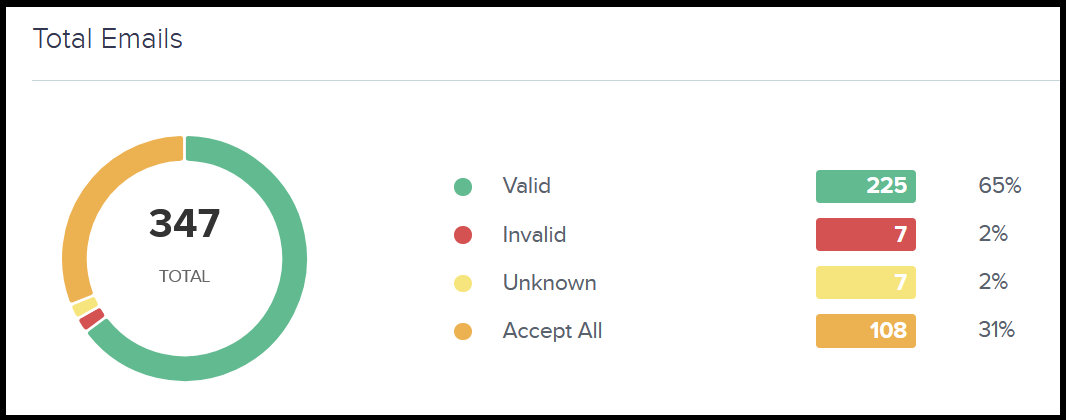Email is increasingly being recognized as one of the most beneficial digital marketing tools to connect with customers and prospects. Just about every company engages in some form of email marketing and because of this, maintaining a well-managed email contact database for a more personalized experience for subscribers is crucial in creating high-conversion email campaigns. Email has evolved in the last 30 years, though. It’s not about volume, but targeting. Here’s how you can target smarter.
What is Contact List Maintenance?
 Contact list maintenance supports your email marketing efforts by organizing and maintaining your email lists to better understand the customer and ensure email viability. Dedicating time to clean and manage your contact lists allows your business to send more targeted emails and build stronger connections with subscribers, ultimately driving more conversions and increasing email deliverability.
Contact list maintenance supports your email marketing efforts by organizing and maintaining your email lists to better understand the customer and ensure email viability. Dedicating time to clean and manage your contact lists allows your business to send more targeted emails and build stronger connections with subscribers, ultimately driving more conversions and increasing email deliverability.
Benefits of Contact Maintenance
Regular review and revision of your contact lists is key to ensuring that all the right people are receiving your messages in their inboxes instead of their spam folders. Cleaning up your contact list allows for a more focused list of subscribers that are actively interested in your content. It also helps reduce the number of invalid emails being sent and unsubscribe requests which can potentially report your email as spam and lead to poor deliverability and blacklisting.
There are multiple benefits to maintaining a healthy contact list:
- Improve Open Rates
Open rates can plummet when your emails are constantly being sent to contacts who have no intention of opening your emails. Targeting and removing inactive email addresses off your contact list prevents you from sending your content to those who aren’t interested.
- Increase Engagement
With regular contact list cleanings, the overall engagement rate of emails will increase. This lets you focus on subscribers who have a true interest in your company, allowing you to create content that satisfies their needs and interests. You won’t be wasting resources nurturing contacts who aren’t interested (or perhaps aren’t even real!). By removing unwanted subscribers, you’ll have higher conversion rates and a more engaged community.
- Decrease Spam Complaints
There is a strong possibility that your emails will be reported as spam when you don’t actively clean your email contact list. Removing contacts from your lists that show no interest or haven’t engaged with your emails reduces spam complaints. Too many spam complaints can cause your deliverability rate to suffer.
- Reduce Risk of Blacklisting
On top of mediocre engagement results, poorly maintained email lists can also negatively impact your domain authority or IP reputation. The more invalid names on your lists, compounded with the more times you try to send to those invalid contacts, the more servers will pick up on the lack of quality contacts. This can lead to a low sender score, which email providers use to determine if your email should go into someone’s inbox, spam folder or, if your score is low enough, not deliver your email at all and blacklist your domain.
Tips to Enhance Your Email Contact Maintenance
You’ve invested a great deal of time and effort into curating your contact list. Keeping it maintained with active users only benefits your company more. Here are a few tips to manage your contact list:
- Validate New Contacts

Using a validation software prior to uploading new contacts to your email platform will help keep invalid contacts from your lists in the first place. Typos, domain changes, people who have left a company, disposable emails and role addresses can all negatively impact not only your email engagement, but also your domain authority. Tools like Brite Verify cost only 1 cent per name – a small price for peace of mind and less risk of bad sender stats.
- Manage Bounce Rate
Email bounce management is a critical aspect of maintaining a healthy and successful email contact list. Bounced emails can occur for several reasons including typos and deleted email addresses. There are two kinds of bounces – hard bounces and soft bounces.
Hard bounces happen when the email address is no longer valid. When you come across hard bounces it is important for you to remove these addresses from your contact list as Email Service Providers (ESPs) use this data to determine the credibility of your account.
Soft bounces occur when there is a temporary problem with an email address or a server, such as a full mailbox or out of office. These emails are eventually resent and delivered. If they continue to bounce, they should be removed from your contact list.
- Use the Double Opt-In Method
Using a double opt-in tactic makes sure that the subscriber who signs up for your emails has a true interest in receiving them, ensuring that there won’t be any hard bounces. When subscribers complete the double opt-in process, it’s evident consent and acknowledgement that they will likely have higher email engagement.
It has also become increasingly required practice with anti-spam laws like CAN-SPAM, CASL, GDPR and more in place. Permission-based email is becoming the norm, rather than just recommended best practice.
If you’re using the double-opt in method and have noticed that your engagement has been decreasing, provide your subscribers with the option to opt-down. This option allows subscribers to stay on your list but receive less emails.
- Segment Your Audience Based on Previous Engagement
 Not every subscriber on your contact lists reacts to email campaigns in the same pattern. By segmenting your email contacts, your business can personalize the emails you send to subscribers, ultimately increasing your open rates. Segmenting your contact lists can be a daunting task, but starting out by separating your contacts between active subscribers and non-active subscribers can be a great first step.
Not every subscriber on your contact lists reacts to email campaigns in the same pattern. By segmenting your email contacts, your business can personalize the emails you send to subscribers, ultimately increasing your open rates. Segmenting your contact lists can be a daunting task, but starting out by separating your contacts between active subscribers and non-active subscribers can be a great first step.
To encourage active subscribers to continue interacting with your emails, rewarding them with exclusive deals and promotions and leveraging their influence in referral campaigns to bring in new subscribers can boost activity and open rates. These are the type of subscribers that build your contact list into high conversion email campaigns.
Before removing inactive subscribers from your contact list to avoid poor deliverability rates, you can focus on email strategies to win back their interest. Understanding what these subscribers may be seeking can help you cater the content and promotions you’re sending to these subscribers. The feedback that you gather from inactive subscribers can provide valuable insight on how to adjust your tactics for future campaigns.
- Identify and Remove Inactive Subscribers
Overall engagement is what matters most when it comes to your email contact list, not the number of subscribers that you may have. To ensure that your company is maintaining a healthy email contact list, you should remove unengaged subscribers. These inactive subscribers are those who haven’t reacted to a single email in the past 3 months (or longer, depending on your email frequency). Removing these addresses will increase your open rates throughout your emails. Before completely removing inactive subscribers, sending them one last email campaign to entice them to re-engage may benefit feedback for your company.
This is usually the hardest step in the process for people to accept if they haven’t been maintaining their lists in this fashion before. Removing a name from your email marketing promotions can feel like you’re losing a potential customer. But if you’re basing these decisions on the data gathered by your customers’ actions, you’ll see that they probably weren’t a potential customer all along. Lack of engagement is the clearest way a contact can inform you of their disinterest.
Moving Forward with Clean Email Lists
Performing routine email contact maintenance is essential to the success of your email marketing strategies. By validating your initial contact names, maintaining your bounce rate, managing opt-in methods, segmenting your audience, and removing inactive subscribers, your contact list will be healthy and the ROI of your email campaigns should increase.
